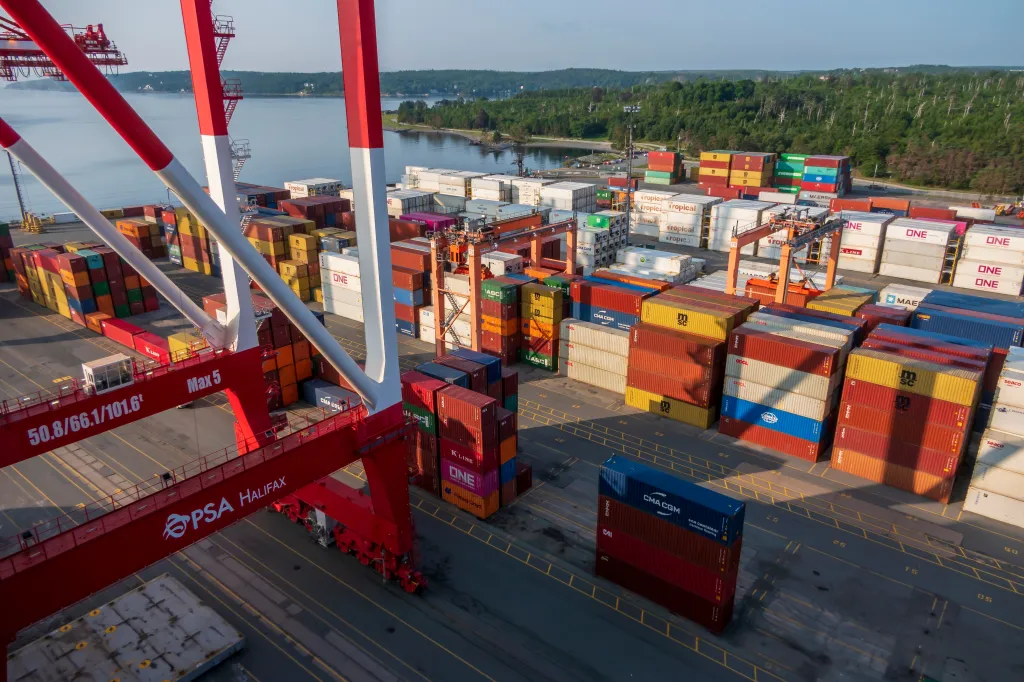When exploring opportunities abroad, Canadian businesses tend to first look immediately south. However, with ongoing trade and tariff instability between Canada and the United States, cross-border trade has become more volatile and unpredictable. In this new reality, businesses may plan to reduce their reliance on the United States as a primary market. With diversification becoming a priority business strategy, leaders may plan to explore new markets further from home.
Free trade agreements could be the gateway to international markets for Canadian companies. Canada has 15 active free trade agreements (FTAs) with 51 global markets, whose combined GDP represents 66% of the global economy.
The value of free trade agreements
Canada’s FTAs include major, multi-country agreements, like the Comprehensive and Progressive Agreement for Trans-Pacific Partnership (CPTPP), The Canada-United States-Mexico Agreement (CUSMA), and The Canada-European Union Comprehensive Economic and Trade Agreement (CETA); and bilateral agreements with trade partners like South Korea, the United Kingdom, Ukraine and Colombia.
Free trade agreements allow Canadian companies to sell products directly to consumers in those markets without facing additional customs tariffs. Not only does that allow Canadian businesses to reach those customers at a lower cost, but it allows them to remain on a level playing field, as Canadian-made goods can hit those foreign shelves at a price point that’s closer to local competitors.
FTAs also come with standardized regulations, which can help to make foreign markets more accessible, and countries within agreements will prioritize partner companies, giving Canadian businesses a competitive advantage.
The opportunity for Canadian business to expand internationally
Canadian businesses also benefit from having a stellar reputation in the global market.
Whether it’s the relatively high health and safety requirements imposed on our livestock, agricultural and food products, or the relatively low levels of corruption and criminality in its major industries, the “Made in Canada” label holds significant cache abroad. Even if it comes at a slightly higher price than local alternatives, international consumers could be willing to pay a premium to purchase Canadian goods.
International trade, however, isn’t for everyone. Business leaders will need to prepare for the time, energy and financial commitments of expansion—and not everyone who attempts to expand into foreign markets will find guaranteed success. With that said, expanding internationally could be one of the most effective ways for businesses to manage the volatility of the domestic market, and the unpredictability of cross-border trade with the U.S.. According to Export Development Canada (EDC), businesses that export generate stronger earnings, grow more quickly, and display greater resiliency during economic downturns.
How to identify potential new markets
Getting started in a new market requires significant research and planning.
The first step is identifying which market or markets are a strong fit for your offering. Depending on the product, service or industry, picking a suitable target could come down to sheer population, cultural similarities, existing competition, regulatory landscapes, to name a few factors.
For most Canadian businesses, the simplest first step out of North America is to one of the large markets to the east or west. Given the practicalities of geographic regions, companies based in eastern provinces may choose to begind with countries across the Atlantic that are part of CETA, while those in the west often first look to CPTPP partners across the Pacific.
RBC offers a free tool, RBC Global Connect, that can help Canadian businesses determine which markets are most suitable for their global expansion.
Things to consider when assessing new markets
Those looking to expand overseas typically face a handful of hurdles along the way. Coming up with solutions ahead of time can ensure a smoother ride.
For example, Canadian businesses looking to expand internationally should consider language, time zone, and cultural barriers. Often, that means working with a translator in each new market, connecting with a trade commissioner, or potentially setting up a field office to establish a local presence.
It’s also important to investigate whether there are any legal or regulatory requirements that apply to your product or service in the market you’re looking to sell into, especially those you haven’t had to confront at home.
Finally, it’s important to consider how you’ll move your goods to their new destination. For example, certain higher-end products might be worth moving by air, others may be more suitable to move by sea, and some may require temperature-controlled freight options.
Before moving into a new market, it’s important to understand how much shipping will cost, how long it will take and how to maintain quality control standards along the way.
Find partners to help with your trade expansion plans
One of the best ways to explore international opportunities is by working with experts who have been there before.
Legal expertise
For example, working with a legal professional who is familiar with the market can help you understand whether your product or service needs to be adjusted to meet local requirements, whether you need to adhere to different rules, or if your product needs a patent to protect it.
Accounting
Your accounting partners should also be able to help you consider potential cash flow requirements that may be necessary in the short-term, tax implications, and whether you need to register or file any other paperwork to do business in the foreign market.
Logistics
Shipping and logistics partners can similarly help you understand your options for getting your product into the global market, including potential costs, timelines and unique challenges based on what you’re shipping.
Trade commissioners
Trade commissioners, meanwhile, can connect you with local partners to help you navigate foreign markets, assist with translation and cultural barriers, or manage any emergencies or challenges that arise.
Banking partners
Finally, your banking partner can be instrumental in facilitating international transactions and currency exchange needs, managing cash flow, providing working capital loans, and trade products like letters of credit. They can also help connect you with the other partners listed above.
RBC’s four to six week Trade Accelerator Program (TAP) provides Canadian businesses hands-on support from industry experts, research and planning expertise, ministry support services, information about funding and grants, and introductions to potential partners. The program is entirely free for RBC referred clients and has been instrumental in helping Canadian businesses of all shapes and sizes successfully expend their operations internationally.
International trade isn’t for everyone, but those who navigate new markets successfully often enjoy more successful and resilient businesses as we result. With free trade agreements across much of the global economy, a strong international brand, and increased volatility south of the border, now could be an opportunity for Canadian businesses to explore new opportunities abroad.
This article is intended as general information only and is not to be relied upon as constituting legal, financial or other professional advice. A professional advisor should be consulted regarding your specific situation. Information presented is believed to be factual and up-to-date but we do not guarantee its accuracy and it should not be regarded as a complete analysis of the subjects discussed. All expressions of opinion reflect the judgment of the authors as of the date of publication and are subject to change. No endorsement of any third parties or their advice, opinions, information, products or services is expressly given or implied by Royal Bank of Canada or any of its affiliates.






